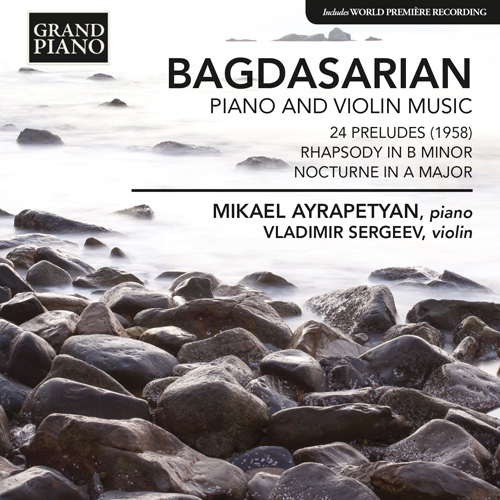
Eduard Bagdasarian (1922 - 1987)
Eduard Ivanovich Bagdasarian was one of the most significant and respected key figure in the modern development of Armenian music. A generation younger than Khachaturian, Bagdasarian was born in Yerevan and received his primary schooling in Tiflis. He then studied at Yerevan Conservatoire, taking piano with Giorgy Saradzhev, H.S. Kushniarov and V.G. Talian and composition with Grigory Egiazarian. His graduate work was a symphonic poem.
In 1951 Bagdasarian went to Moscow, where he continued his composition studies at the House of Armenian Culture, under G.I. Litinsky and Nikolai Peiko. During 1953 he took part in an expedition to the Sisiansky district of Armenia to collect folk-songs, many of which he used subsequently in his own compositions. He initially joined the composition faculty of the Romanos Melikian Music School and later became a member of the conservatory. While he steadily built up a reputation as a composer of concert music, from the mid-1950s he became increasingly involved in film music and incidental music for the stage, and later for television as well, allowing himself to be drawn into more popular contemporary genres without compromising the standards of his musical upbringing. (He wrote the music for Arman Manarian’s Tjvjik, the first film ever shot in the Western Armenian language, and considered a classic.) In the 1960s he was head of instrumental and pop music for Armenian radio, and many of his songs became widely popular. His national prominence gave him a real standing as an ambassador for Armenian music, which he fulfilled many times as a delegate to the other Soviet republics, and abroad as far as Poland and Lebanon. He was also a frequent juror in many USSR competitions for both piano-playing and composition.



 Grand Piano has gained a reputation for producing high quality recordings of rare keyboard gems. Dedicated to the exploration of undiscovered piano repertoire, the label specialises in complete cycles of piano works by many lesser-known composers, whose output might otherwise have remained unknown and unrecorded.
Grand Piano has gained a reputation for producing high quality recordings of rare keyboard gems. Dedicated to the exploration of undiscovered piano repertoire, the label specialises in complete cycles of piano works by many lesser-known composers, whose output might otherwise have remained unknown and unrecorded.






